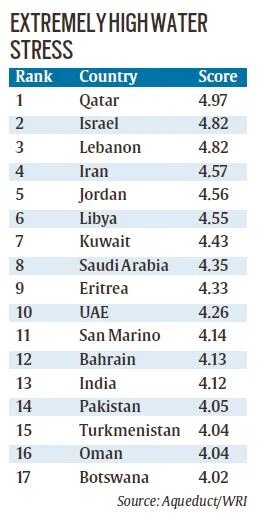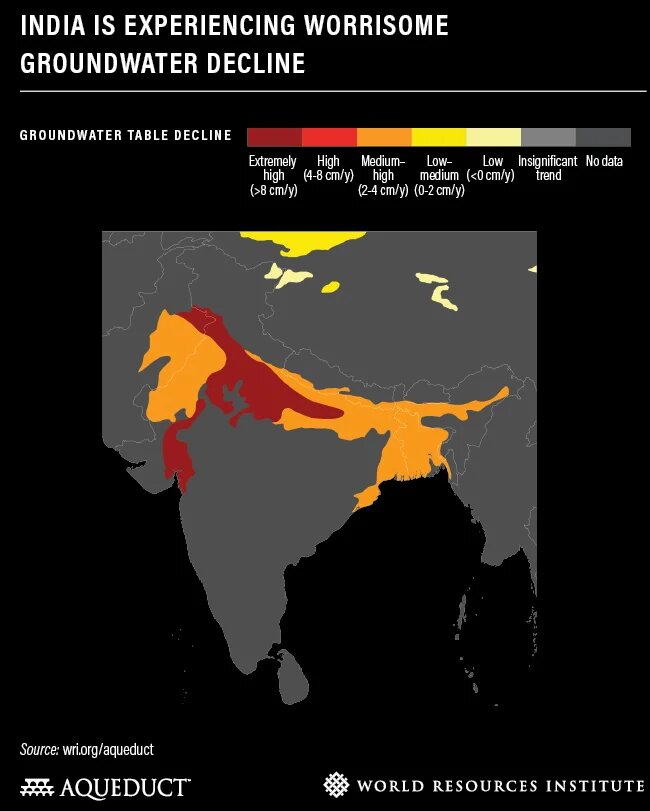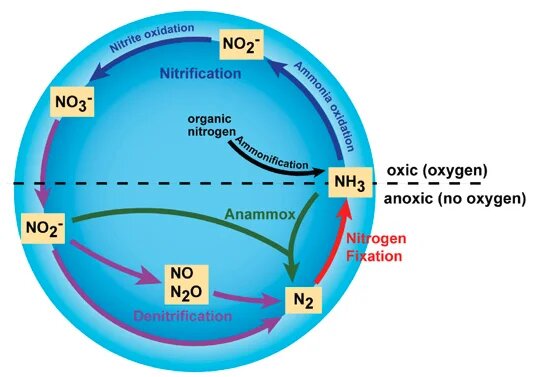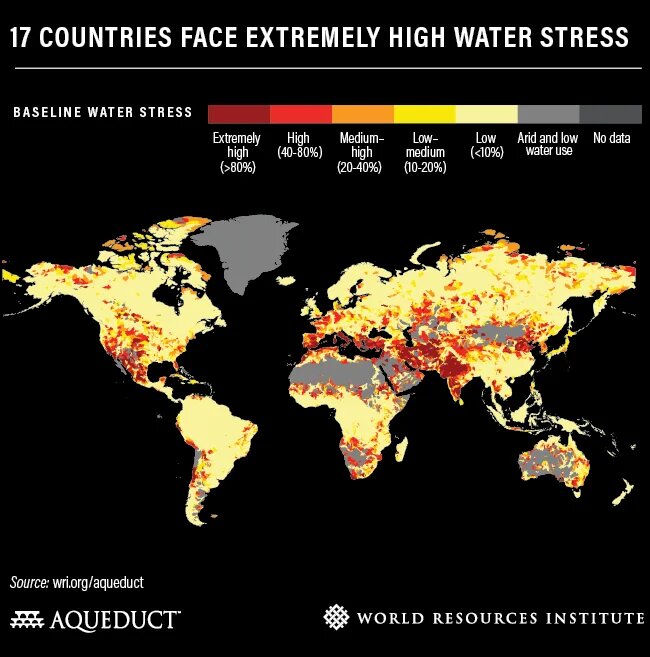Economy
Periodic Labour Force Survey (PLFS)
The recently released unit-level data of the PLFS, (PLFS was launched by the National Sample Survey Organisation (NSSO) in 2017), suggests that job market conditions in the country are more worrisome than what the headline numbers reveal.
- According to Periodic Labour Force Survey (PLFS) 2017-18, 6.1% of India’s labour force, and 17.8% of young people (15-29 years) in the labour force are unemployed.
- The data shows that the proportion of the workforce engaged in regular wage/salaried jobs increased by 5 percentage points between 2011-12 (when the last NSSO employment unemployment survey was conducted) and 2017-18.
- But this increase was partly because of the denominator effect (the overall workforce declined by 4 percentage points between 2011-12 and 2017-18).
- As a share of the population, regular workers increased only by one percentage point to 8% over the same period.
- Moreover, it is worth noting that India still lags far behind its South Asian neighbours and developing economies such as China (53.1%), Brazil (67.7%) and South Africa (84.8%) in the share of salaried or regular jobs.
- The median daily earnings were higher for men and women in regular jobs, as compared to self-employment and casual work.
- However, not all salaried jobs guarantee high pays as around 45% of salaried workers — the best-paid workers in India — earned less than ₹10,000 per month, and only about 4% of them earned more than ₹50,000 per month in 2017-18.
- Overall, 72% of regular workers earned below the minimum monthly salary of ₹18,000 prescribed by the 7th Pay Commission.
- Across categories of the workforce, wages and earnings were higher in urban areas than in rural areas, and for men than for women.
- About 15% of regular workers were engaged in elementary occupations such as building caretakers, garbage collectors and manual workers.
- This includes 21% of women regular workers and 13% of men regular workers.
- The median earnings of these workers was only about one-fourth of the top-earning occupational group (legislators, senior officials and managers).
- The median earnings in elementary occupations is followed by service workers and those engaged in skilled agricultural work and fisheries (median earnings of ₹8000 per month for both sets of workers).
- Regular jobs are important and in high demand globally because they tend to offer better pay and job security.
- About 71% of the regular workers in the non-agricultural sector did not have a written job contract in 2017-18.
- Absence of a written job contract undermines job security, and the proportion without a job contract increased for both men and women regular workers between 2011-12 and 2017-18. So did the proportion of workers who were not eligible for paid leave.
- There was a 5.8 percentage points decline in the proportion of regular workers who were not eligible for any social security benefits between 2011-12 and 2017-18.
- This number continues to be high, and around half of the regular workers were not eligible for any social security benefits in 2017-18.
Government Steps for Generating Employment in the Country
- Government is encouraging private sector of the economy to boost employment in the country.
- Government is also working for fast tracking of various projects involving substantial investment and increasing public expenditure on schemes like:
- Prime Minister’s Employment Generation Programme (PMEGP) run by the Ministry of Micro, Small & Medium Enterprises,
- Mahatma Gandhi National Rural Employment Guarantee Scheme (MGNREGA),
- Pt. Deen Dayal Upadhyaya Grameen Kaushalya Yojana (DDU-GKY) scheme run by Ministry of Rural Development,
- Deendayal Antyodaya Yojana- National Urban Livelihoods Mission (DAY-NULM) run by the Ministry of Housing & Urban Affairs etc.
- The Government has also constituted Cabinet Committee on Employment & Skill Development among others
Economy
Currency Manipulation
The US Treasury Department has declared China as a currency manipulator. This move comes after the People’s Bank of China (PBOC), which is the central bank of China, allowed the yuan to suddenly depreciate (or lose value) relative to the dollar by 1.9% - one of the biggest single-day falls.
Background
- China's currency move came as a result of new tariffs announced by the US President on $300 billion of chinese imports.
- The move roiled markets, with S&P 500 Index sliding more than 1% in Asia.
- The S&P 500 or Standard & Poor's 500 Index is a market-capitalization-weighted index of the 500 largest U.S. publicly traded companies.
- Also, a weaker yuan makes Chinese exports more competitive, or cheaper to buy with foreign currencies.
- The US government has said that it will now engage with the International Monetary Fund (IMF) to eliminate the unfair competitive advantage created by China's latest actions.
- It seems that the ongoing trade war between the world’s two biggest economies is now turning into a currency war as well.
Currency Manipulation
- Currency manipulation happens when governments try to artificially tweak the exchange rate to gain an “unfair” advantage in trade.
- The US Treasury department defines currency manipulation as when countries deliberately influence the exchange rate between their currency and the US dollar to gain "unfair competitive advantage in international trade".
- Once a country is designated as a currency manipulator by the U.S., the next step taken by the US government is to seek negotiations with the government accused of manipulation.
- But officials in Beijing and Washington have already been engaged in trade talks for more than a year.
- If there is no progress a year after the designation, China could face possible sanctions including its firms being prohibited from competition for US government contracts and excluded from getting financing from an American government agency for development projects.
Exchange Rate
- Exchange rate is the price of one currency in terms of another currency.
- It often determines the affordability of buying or selling internationally.
- For instance, if one wants to buy a car produced in the U.S., that will involve two transactions: one, using rupees to buy dollars; two, using these dollars to buy the car.
- The exchange rate for any currency would be determined by the interplay of its demand and supply.
- For instance, if more Indians want to buy US goods, there would be a higher demand for the dollar relative to the rupee. This, in turn, would mean the dollar would be “stronger” than the rupee — and gain in strength as the demand increases.
- If demand falls, the dollar would depreciate relative to the rupee (or the rupee would appreciate relative to the dollar).
- Sometimes central bank of a country intervenes to reduce wild fluctuations in the exchange rate. But excessive and undisclosed interventions are not considered fair.
- For instance, if China’s central bank buys dollars in the forex market, it can artificially weaken the yuan — and Chinese goods will then become more affordable (and competitive) in the international market.
Agriculture
Aquaponics
Aquaponics is an ecologically sustainable model that combines Hydroponics with Aquaculture.
Hydroponics is the soilless growing of plants, where soil is replaced with water. Aquaculture is the raising of fish.
- With Aquaponics both fish and plants can grow in one integrated ecosystem.
- The fish waste provides an organic food source for the plants, which in turn naturally filter the water for the fish, creating a balanced ecosystem.
- The third participant i.e. microbes or nitrifying bacteria converts the ammonia from the fish waste into nitrates which plants need to grow.
Benefits and Weaknesses of Aquaponics
The Food and Agriculture Organization of the United Nations (FAO) put out a technical paper in 2014, detailing the positives and negatives of the practice:
- Benefits:
- Higher yields (20-25% more) and qualitative production.
- Can be used on non-arable land such as deserts, degraded soil or salty, sandy islands.
- Creates little waste.
- Daily tasks, harvesting and planting are cut down to a great extent, thereby saving labour and time.
- Both fish and plants can be used for consumption and income generation.
- Weaknesses:
- Expensive initial startup costs compared with soil production or hydroponics.
- Knowledge of fish, bacteria and plant production is needed.
- Optimal temperature ranges needed (17-34°C).
- Mistakes or accidents can cause catastrophic collapse of system.
- Daily management is mandatory.
- Requires reliable access to electricity, fish seed and plant seeds.
- If used alone, aquaponics will not provide a complete diet
Nitrogen Cycle
- Nitrogen is one of the primary nutrients critical for the survival of all living organisms.
- It is a necessary component of many biomolecules, including proteins, DNA, and chlorophyll.
- Although nitrogen is abundant in the atmosphere as Nitrogen gas (N2), it is largely inaccessible in this form to most organisms, making nitrogen a scarce resource and often limiting primary productivity in many ecosystems.
- Only when nitrogen is converted from Nitrogen gas into ammonia (NH3) it becomes available to primary producers, such as plants.
- The major transformations of nitrogen gas are through the process of:
- Nitrogen fixation (nitrogen gas to ammonia),
- Nitrification (ammonia to nitrite and nitrate),
- Denitrification (nitrate to nitrogen gases)
- The process of converting Nitrogen gas (N2) into biologically available nitrogen, that is ammonia, by nitrogen fixing microorganisms, is called nitrogen fixation.
- Some nitrogen-fixing organisms are free-living, while others are symbiotic nitrogen-fixers, which require a close association with the host to carry out the process.
- Some of these bacteria are aerobic, others are anaerobic; some are phototrophic, others are chemotrophic (use chemicals as their energy source instead of light).
- They all have a similar enzyme complex called nitrogenase that catalyzes the reduction of N2 to NH3 (ammonia).
- Nitrification is the process that converts ammonia to nitrite and then to nitrate.
- Most nitrification occurs aerobically and there are two distinct steps of nitrification that are carried out by distinct types of microorganisms.
- The first step is the oxidation of ammonia to nitrite, which is carried out by microbes known as ammonia-oxidizers.
- The second step in nitrification is the oxidation of nitrite (NO2-) to nitrate (NO3-). This step is carried out by a completely separate group of prokaryotes (a unicellular organism), known as nitrite-oxidizing bacteria.
- Most nitrification occurs aerobically and there are two distinct steps of nitrification that are carried out by distinct types of microorganisms.
Nitrogen Cycle
Biodiversity & Environment
Water Stress in India
According to the data released by the World Resources Institute (global research non-profit organization), India is ranked 13th among the 17 most water stressed countries of the world.
- The Aqueduct tool used by the WRI ranks countries on the basis of water risk scores which are determined using 13 indicators of water risk.
Aqueduct Water Risk Atlas
- Aqueduct's global water risk mapping tool helps companies, investors, governments, and other users understand where and how water risks and opportunities are emerging worldwide.
- Aqueduct tools allow users to better see and understand water risks and make smart decisions to manage them.
Global Findings
- Baseline Water Stress (BWS): One-quarter of the world’s population faces extremely high levels of baseline water stress.

- It implies that irrigated agriculture, industries, and municipalities withdraw more than 80% of their available supply on average every year.
- The BWS layer, developed as part of WRI's Aqueduct Water Risk Atlas, measures the ratio of total water withdrawals (municipal, industrial, and agricultural) relative to the annual available renewable surface water supplies.
- Rising Water Demand: Globally, water withdrawals have more than doubled since the 1960s due to the growing demand for water supply.
- Water Stressed Countries: Twelve out of the 17 most water-stressed countries are in the Middle East and North Africa(MENA) region and the reason for this can be attributed to the geographical conditions (hot and dry) of the region that have created a water supply and demand imbalance.
- The World Bank found that this region has the greatest expected economic losses from climate-related water scarcity.
- Water Stressed Communities: Even in countries with overall low water stress like in South Africa (SA) and the United States (US), communities in Western Cape (SA) and New Mexico (US) may still be experiencing extremely stressed conditions.
- Top 17 water stressed countries are, Qatar, Israel, Lebanon, Iran, Jordan, Libya, Kuwait, Saudi Arabia, Eritrea, UAE, San Marino, Bahrain, India, Pakistan, Turkmenistan, Oman and Botswana.
India Specific Findings
- India is ranked 13 on Aqueduct's list of 17 extremely highly water-stressed countries.
- Northern India which was included in calculations of water stress for the first time, faces severe groundwater depletion.
- Chandigarh tops this list, followed by Haryana, Rajasthan, Uttar Pradesh, Punjab, Gujarat, Uttarakhand, Madhya Pradesh and Jammu and Kashmir.
- India’s water crisis challenges extend beyond Chennai, which was recently reported to have run out of water.
Consequences
- Food Insecurity: Water is key to food security as agriculture requires large quantities of water for irrigation.
- Water Conflict and Migration: The loss of livelihood due to increasing water scarcity and variability could force those affected to migrate.
- Financial Instability: According to the World Bank, Increasing water scarcity could erode some nations’ gross domestic product, triggering economic problems and a host of other issues.
Recommendations
- Efficient Irrigation: In order to curb the problem of baseline water stress,(i.e excessive water withdrawal) countries must switch to more efficient irrigation technologies.
- Water Conservation: Steps must be taken to promote the conservation and restoration of water bodies like lakes, floodplains, ponds and more emphasis must be laid on groundwater recharging to avoid groundwater crisis.
- Water-related Data: India can manage its water risk with the help of reliable and robust data pertaining to rainfall, surface, and groundwater to develop strategies that strengthen resilience.
Economy
Changed Regulations for Insurance Marketing Firms
The Insurance Regulatory and Development Authority of India (IRDAI) has recently notified the changes to regulations governing Insurance Marketing Firms (IMFs).
- The amendments to the regulations have been introduced from the perspective of increasing insurance penetration by providing an enabling environment.
- IRDAI had also constituted a committee under Suresh Mathur that made many recommendations including a reduction in the net worth, expansion of the area of operation of IMFs, as well as the basket of products.
New Regulations
- For IMFs applying to launch operations in only one district, which is an aspirational district as defined by NITI Aayog or an economically backward district, a net worth limit of ₹5 lakh would suffice.
- The net worth would continue to be a minimum of ₹10 lakh for all other cases.
- The Suresh Mathur committee had pointed out that the ₹10 lakh norm was high for tier-II and III cities.
- An IMF is allowed to register for three districts in a State, with at least one of them being aspirational district.
- Another amendment permits the IMFs to engage with Agriculture Insurance Company of India and Export Credit Guarantee Corporation.
- This would be in addition to existing norms allowing them to solicit business for two life, two general and two health insurers.
- IMFs can now solicit business for all kinds of products sold on individual and/or retail basis, including crop insurance for non-loanee farmers and combination products.
- Property, group personal accident, group health and term insurance policies for Micro, Small and Medium Enterprises (MSME) form part of the products list.
Insurance Marketing Firm
- Insurance Marketing Firm is a new distribution channel to solicit or procure insurance products, to distribute other financial products by employing individuals licensed to market, distribute and service such other financial products.
- The firm can also sell other financial products such as mutual funds, National Pension System (NPS), banking and financial products of banks and non-banking financial companies that are regulated by the Reserve Bank of India, post office savings schemes and other products distributed by investment advisers who are licenced by the Securities and Exchange Board of India.
Indian Economy
National Time Release Study
India’s first national Time Release Study (TRS) is being conducted by the Ministry of Finance as part of its strategic commitment to improve global trade.
- Time Release Study exercise will be conducted every year across 15 ports including sea, air, land and dry ports.
- The national TRS will establish baseline performance measurement and have standardized operations and procedures across all ports.
- TRS initiative for accountable governance, will measure rule-based and procedural bottlenecks (including physical touchpoints) in the clearance of goods, from the time of arrival until the physical release of cargo.
- The TRS is an internationally recognized tool advocated by the World Customs Organization to measure the efficiency and effectiveness of international trade flows.
- Objective: Identify and address bottlenecks in the trade flow process and take the corresponding policy and operational measures required to improve the effectiveness and efficiency of border procedures, without compromising efficient trade control.
- Expected beneficiaries: Will be export-oriented industries and Micro, Small & Medium Enterprises (MSME) who will enjoy greater standardization of Indian processes with comparable international standards.
- Significance: TRS initiative will help in improving the Ease of Doing Business (EODB), particularly on the trading across borders indicator which measures the efficiency of the cross border trade ecosystem.
Important Facts For Prelims
5th National Handloom Day
The 5th National handloom day is being celebrated across the country on 7th August 2019.
- The National handloom day is observed annually on 7th August to honour the handloom weaving community and highlight the importance of India’s handloom industry.
- Bhubaneswar, Odisha has been chosen as the venue for the celebration of handloom day, due to its rich tradition of handlooms and to empower women and girls of the region.
- More than 50% of total weavers population of India resides in Eastern and North Eastern region of the country.
- August 7 was chosen as the National handloom day to commemorate the Swadeshi movement which was based on the Gandhian ideology of Swadeshi.
- Swadeshi movement was launched on 7th August, 1905 in Calcutta town hall to protest against the partition of Bengal (by the British Government) by reviving domestic products and production processes.
- The first National handloom day was inaugurated on 7th August 2015.
- National handloom day seeks to focus on the contribution of handloom to the socio-economic development of the country.
Important Facts For Prelims
Toni Morrison
Toni Morrison, the first African American woman to win the Nobel Prize for Literature, has passed away. Morrison was born in Ohio (US) on 18th February, 1931.
- Morrison wrote 11 novels, many of them touching on life as a black American, in a glittering literary and award-laden career that lasted over six decades.
- "The Bluest Eye," her first novel, was published in 1970. She followed up with "Sula" in 1973, going on to publish another nine novels.
- She won the Pulitzer Prize and the American Book Award in 1988 for her 1987 novel "Beloved".
- Morrison received numerous other accolades including the Nobel Prize for Literature in 1993.






